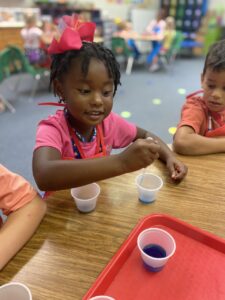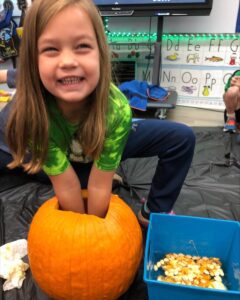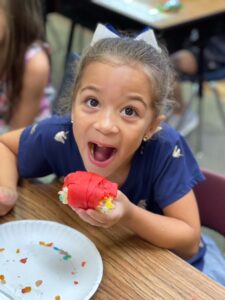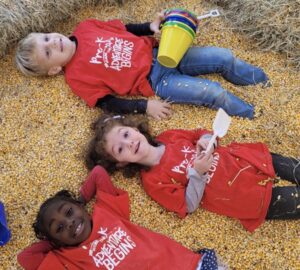GRADES 1-3
Students in grades 1-3 receive self-contained classroom instruction. Class size is limited to ensure adequate time for individualized instruction. Understanding that children learn using different modalities, teachers use various strategies to teach skills necessary for progressing to the next level. Each classroom is equipped with a computer for student enrichment and Promethean Boards are shared throughout each grade level.
Thomas Sumter Academy uses the McGraw Hill Wonders 2020 ELA/Reading Series. This series builds a firm foundation for literacy by using a systematic, integrated approach to teach spelling, language, reading, phonics, structured writing, vocabulary, and grammar. It integrates science, social studies, and powerful fiction and nonfiction literature to teach the whole child. This series incorporates both a print and digital format for each child. Cursive handwriting is taught second semester of second grade using the Zaner Bloser method of cursive instruction. In addition to the reading series, each student uses Reading A-Z, SeeSaw for Schools, and Scholastic Weekly.
The Cengage Big Ideas mathematics series is used for math instruction. This series incorporates skills practice with the use of hands-on manipulatives and activities to construct meaning to math concepts. Basic math concepts, their application, and problem solving are emphasized at each grade level. Multiplication is introduced at the end of second grade to ready students for further instruction in third grade.
In 1st and 2nd grade, social studies and science concepts are taught in an integrated manner through the Reading curriculum along with the print and digital form of Scholastic Weekly. Topics such as animals, the earth, friends and family, space, and cultures are explored through exciting stories, discussions, and activities. Students also attend the STEAM Lab weekly to conduct experiments and study science concepts appropriate for their grade level. Students further their knowledge of social studies and science concepts by participating in field trips. Students participate in classroom and school wide projects such as recycling, fundraising for the Feed my Starving Children Campaign, and adopting children through the Salvation Army Angel Tree project.
Third graders use the Pearson Scott Foresman Science curriculum in the classroom. The STEAM teacher correlates with the classroom teachers to conduct science experiments and extension activities that follow the course of study on a weekly basis. Scott Foresman South Carolina is also used for a study of our state’s history. Interesting projects and a trip to the State House in Columbia help bring this study to life for the students. Physical fitness is vital to the total well-being of all children. All students attend P.E. classes on a weekly basis to develop gross motor skills, teamwork, fundamentals of sports, and to foster a healthy lifestyle of daily physical activity. Each student will participate in The Presidential Physical Fitness Award Program
The 1st -3rd grade curriculum is rounded out by weekly enrichment classes. These classes are taught by gifted instructors who can develop each child’s talents and interests in these areas. Bible, performing arts, music, dance recitals and performances, as well as book fairs and author studies in the library, offer opportunities for students to showcase their creativity and talents. Students in grades 1-5 attend a weekly chapel service led by area youth leaders. Students also have access to a Literacy Lab where they receive specialized instruction with reading skills.





